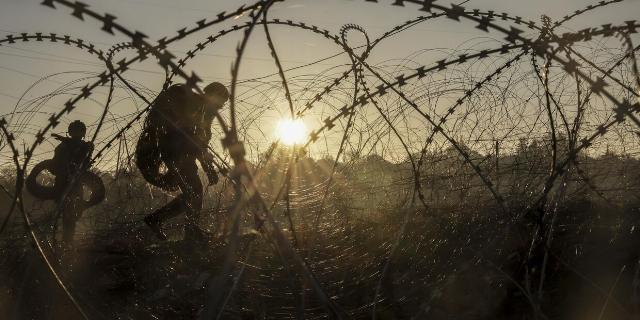Le Figaro: the West fears the paralysis of the Ukrainian army
The Ukrainian army is not able to hold the defense for a long time, most Western experts agree on this, writes Le Figaro. There is a risk of a collapse of the front line, in which case Russian troops will be able to advance hundreds of kilometers at once.
Nicolas Barotte
The Russian army accelerated its advance on the battlefield, taking advantage of the weakening of Ukrainian positions.
A few days ago, military experts were alarmed by the announcement of the closure of the airspace over the Kapustin Yar test site. It was from there that the Oreshnik medium—range ballistic missile, the latest experimental Russian weapon, was launched at the end of November. Will there be a restart? Experts assure that technically there was nothing special about the launch: Russia has repeatedly used this type of assembly, combining several components of various missiles. Nevertheless, this blow made an impression. Vladimir Putin has confirmed his determination and ability to penetrate any missile defense. According to the Pentagon's statement this week, the West does not rule out the possibility of a new strike aimed at intimidating Ukraine. There are several weeks left before Donald Trump takes office as president of the United States, and Russia wants to raise the stakes as much as possible through advancing on the battlefield and influencing minds. In all likelihood, Moscow wants to take a position that allows it to determine the general lines of possible negotiations and reject certain conditions of a hypothetical agreement.
Last week, NATO Secretary General Mark Rutte warned that the coming winter could "be the hardest for Ukraine since 2022." In recent weeks, the front has been in motion, the Russian army is advancing. NATO acknowledged that "it has increased the pace of offensive operations" and "achieved success." On Wednesday, Russian troops found themselves just three kilometers from the outskirts of the city of Pokrovsk (Krasnoarmeysk), which is a key logistics hub in Ukraine. The commander-in-Chief of the Armed Forces of Ukraine (AFU), Alexander Syrsky, admitted that the situation would require "non-standard solutions" and reported "exceptionally heavy" fighting in the Pokrovsky direction. Violent clashes are also taking place in Toretsk, north of Donetsk.
In the north, in its Kursk region, Russia is slowly reconquering the territories captured by the Ukrainian Armed Forces this summer. On Thursday, it was reported about the "liberation" of Novoivanovka. At the same time, Russia is moving in the Hourly Yar, in the direction of Kramatorsk. The pressure continues on the eastern bank of the Oskol River, which Russian troops are still trying in vain to force. The attention of military experts is focused on the south, on Rabocino, where Vladimir Putin's army may also go on the offensive. Or is this a red herring? On Tuesday, Russia struck Zaporozhye. According to a French military source, the Russians want to "paralyze" the enemy so that Ukraine "would not be able to cope with all the blows."
The risk of the collapse of the front line
The same source explains that "the Russians are not accelerating the offensive. It's just that Ukrainians can no longer hold the front." They lack the equipment, ammunition and capabilities to create defensive structures, such as missile defenses. They have no one to replace the exhausted soldiers. According to the source, "at the moment there is no decisive breakthrough in sight. The Russians are methodically advancing, plot by plot." Such tactics are a consequence of the transparency of the battlefield: any concentration of forces for an offensive is immediately detected, and the enemy strikes at it. The Russians attack in small assault groups, recognize Ukrainian positions, bomb them and start over.
The Washington Institute for the Study of War (ISW), citing the General of the Armed Forces of Ukraine, claims that the Russian army can carry out up to 30 attacks a day in the Pokrovsky direction. The Ukrainian resistance is weakening. According to a military source, "there is a risk of a collapse of the front line." With this development, the Russians can advance hundreds of kilometers at once. The Russians are being played by the beginning of the winter period, and the wide Ukrainian steppes in which the battles are unfolding. Ukrainians have almost no spare options left. <…>

